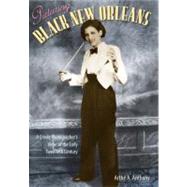Picturing Black New Orleans

Picturing Black New Orleans
- ISBN 13:
9780813041872
- ISBN 10:
0813041872
- Format: Hardcover
- Copyright: 09/02/2012
- Publisher: Univ Pr of Florida
Rent
Sorry, this item is currently unavailable.
Note: Supplemental materials are not guaranteed with Rental or Used book purchases.
Extend or Purchase Your Rental at Any Time
Need to keep your rental past your due date? At any time before your due date you can extend or purchase your rental through your account.
Summary
Florestine Perrault Collins (18951988) lived a fascinating and singular life. She came from a Creole family that had known privileges before the Civil War, privileges that largely disappeared in the Jim Crow South. She learned photographic techniques while passing for white. She opened her first studio in her home, and later moved her business to New Orleans's black business district. Fiercely independent, she ignored convention by moving out of her parents' house before marriage and, later, by divorcing her first husband. Between 1920 and 1949, Collins documented African American life, capturing images of graduations, communions, and recitals, and allowing her subjects to help craft their images. She supported herself and her family throughout the Great Depression and in the process created an enduring pictorial record of her particular time and place. Collins left behind a visual legacy that taps into the social and cultural history of New Orleans and the South. It is this legacy that Arthé Anthony, Collins's great-niece, explores in Picturing Black New Orleans. Anthony blends Collins's story with those of the individuals she photographed, documenting the profound changes in the lives of Louisiana Creoles and African Americans. Balancing art, social theory, and history and drawing from family records, oral histories, and photographs rescued from New Orleans in the wake of Hurricane Katrina, Anthony gives us a rich look at the cultural landscape of New Orleans nearly a century ago.






